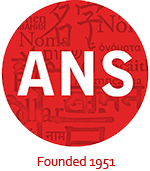 The powerful trade association that represents champagne makers has sued bloggers, water bottlers and haute couture fashion brands. They warned Apple against calling the gold iPhone “champagne” and spent three years making sure that no one but French producers could snag champagne-related wine URLs.
The powerful trade association that represents champagne makers has sued bloggers, water bottlers and haute couture fashion brands. They warned Apple against calling the gold iPhone “champagne” and spent three years making sure that no one but French producers could snag champagne-related wine URLs.
But recently the Comité Interprofessionnel du vin de Champagne scored an even more significant victory, when Europe’s highest court suggested in a nonbinding ruling that even products containing the French sparkling wine may not be able to use the name “champagne.”
The case in question involved “Champagne sorbet,” which Aldi sold at a number of its German stores in 2012. The dessert contained 12 percent champagne — the real kind, from France — but the Comité Champagne claimed the use of the protected name on a non-wine product risked cheapening it. Read this Washington Post article to find out the details and the likely future for the name “champagne”.









